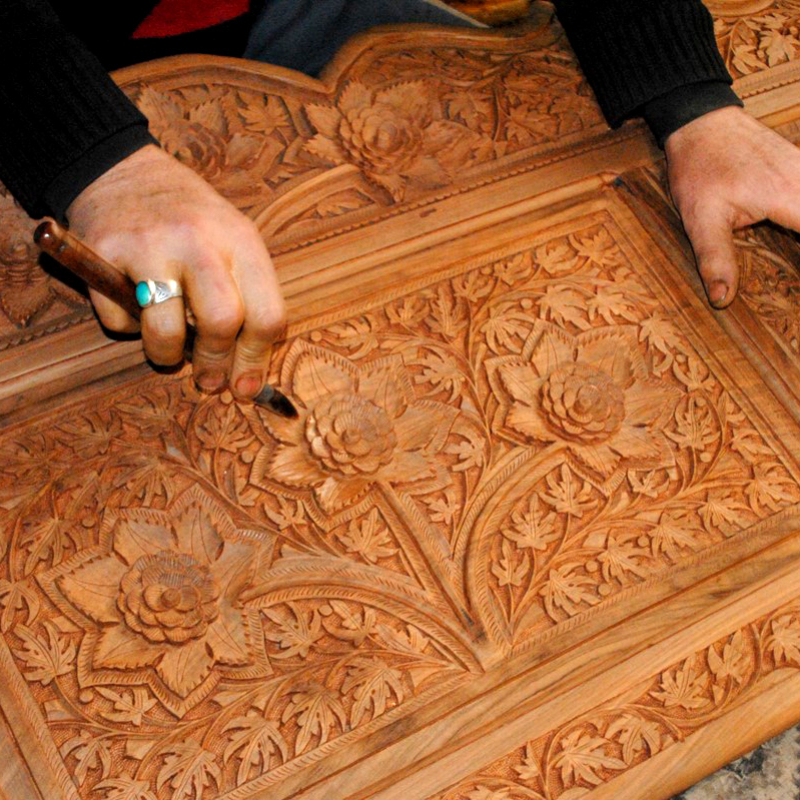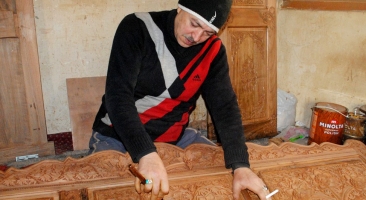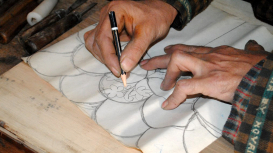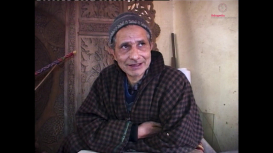Kashmir is one of the few places in the world where the walnut tree grows at a height of 5,500 feet to 7,500 feet above sea level. Walnut wood carving is one of the important crafts in the state. Walnut wood furniture occupies pride of place in Kashmiri households; it is also an essential constituent in a bride’s wedding trousseau. The wood for carving comes from either the root or the trunk of the tree. The peculiar characteristics of the walnut wood facilitate exquisitely detailed and intricate carving. Downtown Srinagar is strewn with walnut wood workshops where you find craftsmen, renowned for their carving skills, bent over the wood, chiselling and polishing. They meticulously carve out motifs of grape bunches, chinar leaves, pears, rose, etc., in the wood. A kharkhana or workshop is headed by an ustad or master and those who work alongside him are called karigars. The work in a karkhana happens mainly on three fronts—carpentry, carving and polishing. This module carries an overview, a gallery of images from within the kharkhana and two interviews with master craftsmen. One interview is about the carving tools used in the woodwork and the other touches on the system of apprenticeship in the workshops.

Nikita Kaul
Nikita is currently pursuing her PhD from the Department of Sociology, Delhi School of Economics. Her ethnographic research studies the networks and social milieu of walnut wood carving. She did her MPhil from the Department of Humanities and Social Sciences, IIT Bombay.




